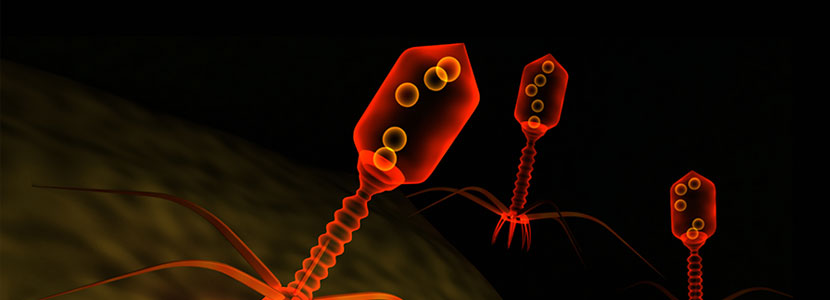Content available at: Español (Spanish)
- What is phage therapy and what is its use in poultry?
Intensive production in the poultry sector will be at an estimated 132 million tons of chicken meat by 2026. The only feasible way to achieve this growth will be by adopting strategies that allow the control and prevention of infections with a significant economic impact.
In 2018, the two most common zoonoses in humans in the European Union (EU) were caused by Campylobacter and Salmonella with a total of 246,571 and 91,857 cases, respectively. In this same year, the incidence of infection (per 100,000 inhabitants) in the United States was 19.5 for Campylobacter and 18.3 for Salmonella. The cause in most cases was the consumption of contaminated products derived from poultry.
Both Campylobacter and many Salmonella enterica serotypes do not cause diseases in birds. However, S. Gallinarum or S. Pullorum or certain strains of Escherichia coli are responsible for infections that cause significant economic losses in the sector.
To avoid this, there has been an abuse and misuse of antibiotics, which has contributed to the emergence of multi-resistant bacterial pathogens to antibiotics that are rendered ineffective in the treatment of certain bacterial infections in both humans and animals. In this sense, the EU, following the latest recommendations of the World Health Organization (WHO), has approved a regulation with application in 2022, further limiting the preventive use of antibiotics in poultry farming.
Despite this, alternative or complementary strategies to antibiotics such as phage therapy are required to stop the transmission of antibiotic-resistant pathogens through the food chain.
- Its natural origin
- High specificity
- The non-involvement of the commensal microbiota
- Self-replication capability
- Low involvement of host cells
However, they also have some disadvantages such as:
- Its reduced host range
- The possible development of resistance to bacteria
- Its possible degradation in adverse environments (i.e. acidic pH of the stomach)
These limitations can be overcome by using bacteriophage cocktails that recognize different bacterial receptors or encapsulate them to protect them.
The efficacy of phage therapy in poultry for the control of infections caused by Campylobacter, Salmonella and E. coli has been previously reviewed. This article summarizes advances made in the last 6 years with reference to the use of non-encapsulated and encapsulated bacteriophages (Table 1).
Most of the studies are experimental in nature and the effectiveness of phage therapy is uneven, influenced by different factors such as the type of microorganism, the age of the animals, the route and time of administration of the bacteriophages or individual characteristics of the phage or its specificity.
Keep up to date with our newsletters
Receive the magazine for free in digital version
REGISTRATION
ACCESS
YOUR ACCOUNT
LOGIN
Lost your password?

